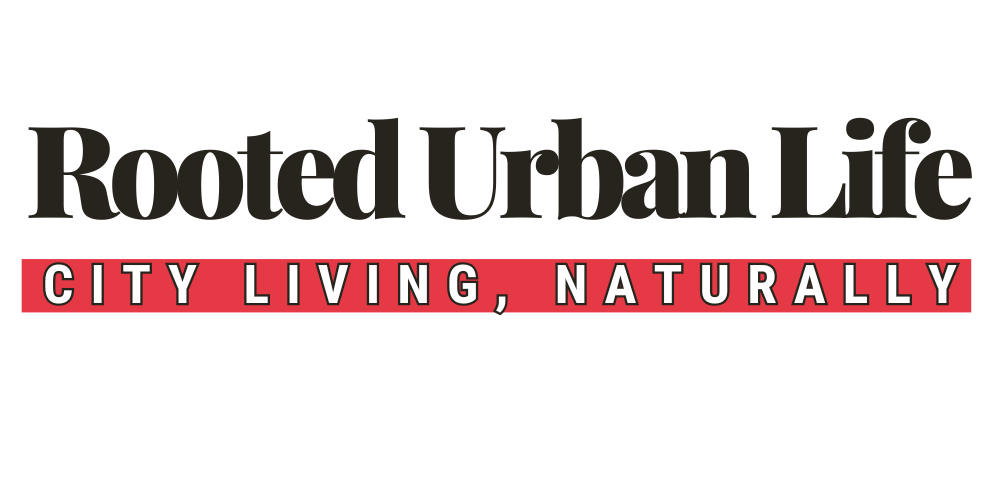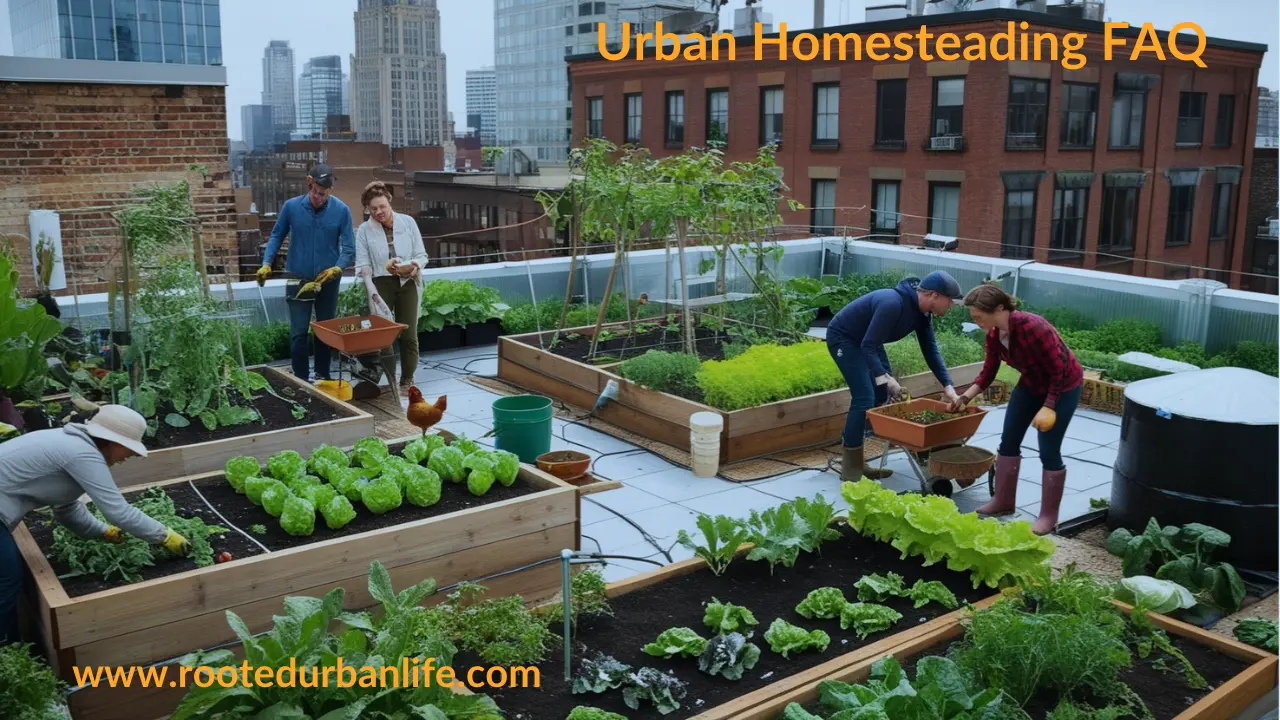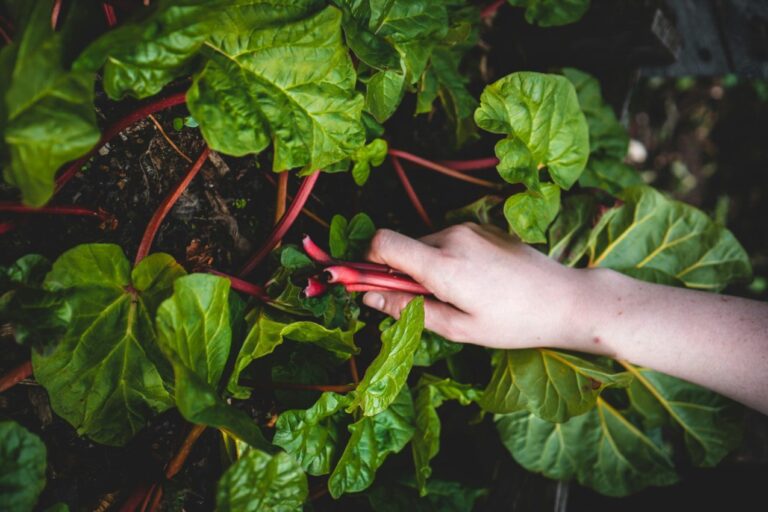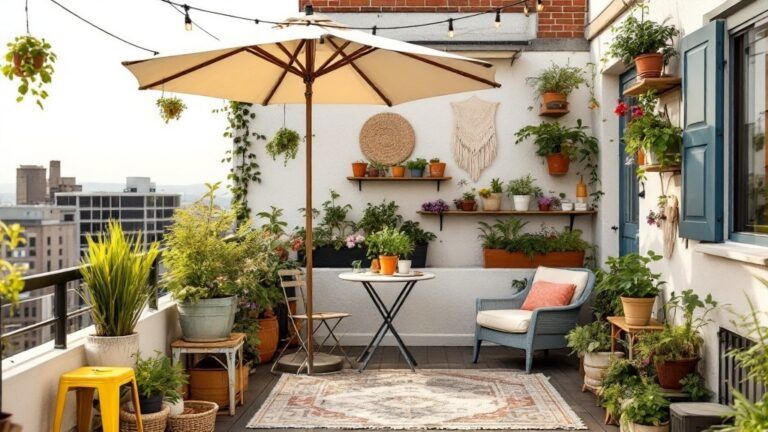Urban Homesteading FAQ
Your Ultimate Guide to Self-Sufficiency in the City
Have you ever dreamed of growing your own food and living a more sustainable lifestyle, even in the heart of the city?
Welcome to the world of urban homesteading!
This comprehensive guide answers common questions about self-sufficiency in urban environments, helping beginners understand the ins and outs of this growing movement.
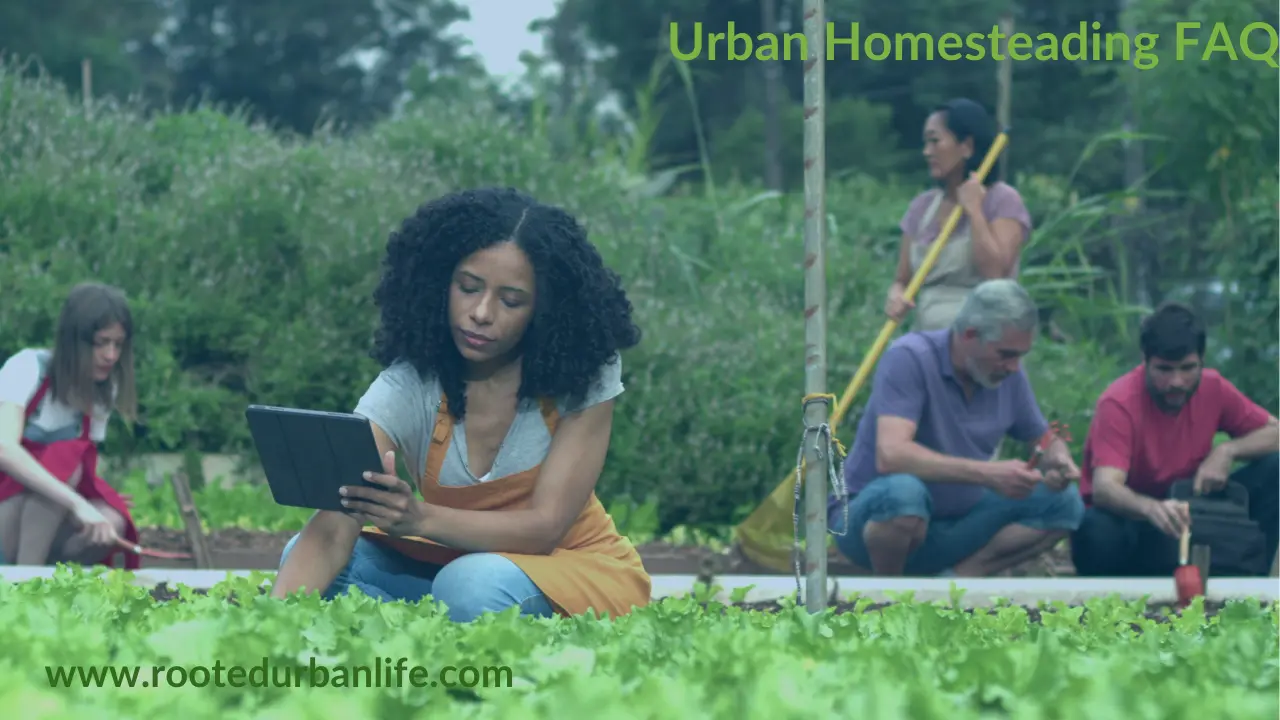
Urban Homesteading FAQ
| The guide explores the essentials of urban homesteading, from defining what it means to be a modern homesteader to practical tips on getting started. It includes crop selection, pest control, tool essentials, community engagement, soil management, homestead diversification, time management tips for busy professionals and more. |
What is urban homesteading?
Urban homesteading is a conscious choice to live sustainably and self-sufficiently within an urban environment.
It involves adapting traditional homesteading practices to city living, allowing individuals to take control of their food sources, reduce waste, and shrink their carbon footprint.
The roots of urban homesteading can be traced back to traditional homesteading and times in history where self-reliance was vital.
Today, it has evolved into a movement that empowers city dwellers to reconnect with nature and embrace a more sustainable lifestyle.
What is the difference between urban and rural homesteading?
While both urban and rural homesteading share the goal of self-sufficiency, they differ in scale and approach.
| Aspect | Urban Homesteading | Rural Homesteading |
| Space | Limited (apartments, small yards, patios, balconies) | Extensive (large plots of land) |
| Activities | Container gardening, vertical farming, small livestock | Large-scale farming, large-scale livestock |
| Challenges | Space constraints, zoning laws | Isolation, lack of utilities |
| Community | Often involves community gardens and local networks | More self-contained, less community-dependent |
| Lifestyle | Balances with city life and full-time jobs | Often a full-time lifestyle |
Urban homesteaders adapt rural practices to work within city constraints, focusing on maximizing limited space and navigating urban regulations.
What is considered an urban homestead?
An urban homestead is typically a city dwelling – apartment, townhouse, or single-family home – where the occupants actively practice self-sufficiency. Key elements often include:
- Food Production: Growing fruits, vegetables, and herbs in available spaces.
- Small Livestock: Raising animals like chickens, quail, or bees (where permitted).
- Water Conservation: Implementing rainwater collection systems.
- Energy Efficiency: Exploring renewable energy options.
- Waste Reduction: Composting and recycling.
- Food Preservation: Canning, fermenting, or dehydrating produce.
What is a modern homesteader?
A modern homesteader is an individual who embraces self-sufficiency principles while adapting them to contemporary lifestyles and environments.
The modern homesteader:
- Blends traditional skills with modern technology
- Focuses on sustainability and eco-friendly practices
- Often maintains regular jobs while pursuing homesteading activities
- Emphasizes community engagement and knowledge sharing
- Adapts homesteading practices to suit urban or suburban settings
Is homesteading a life of self-sufficiency?
Complete self-sufficiency is challenging everywhere today, not only in an urban setting.
However, homesteading significantly increases independence and sustainability.
Urban homesteaders aim to:
- Produce a portion of their own food
- Reduce reliance on commercial products
- Minimize waste and energy consumption
- Develop practical skills for greater self-reliance
Urban homesteading is often about finding a balance between self-sufficiency and modern urban living, rather than achieving total independence from external resources.
How do I get started with urban homesteading?
For those wondering how to get started urban homesteading, here’s a step-by-step guide for beginners:
- Educate Yourself: Read books, attend workshops, or join online communities to learn about urban homesteading techniques.
- Start Small: Begin with a windowsill herb garden or a few container plants on your balcony.
- Understand Zoning Bylaws: Research local regulations regarding gardening, composting, and keeping small livestock in your area.
- Assess Your Space: Evaluate your available area, considering factors like sunlight exposure and potential for vertical gardening.
- Plan and Allocate Resources: Set a budget for initial costs and ongoing expenses. Consider the time you can realistically dedicate to your homestead.
- Connect with Others: Join local gardening groups or online forums to exchange ideas and experiences with fellow urban homesteaders.
What crops should I grow in an urban setting?
When choosing crops for your urban homestead, consider these high-yield, space-efficient options:
- Herbs: Basil, mint, cilantro, and parsley thrive in small spaces and add fresh flavor to your meals.
- Leafy Greens: Lettuce, spinach, and kale grow quickly and can be harvested continuously.
- Tomatoes: Cherry or determinate varieties are ideal for containers or small spaces.
- Peppers: Both sweet and hot peppers grow well in pots and add variety to your harvest.
- Vertical Growers: Pole beans, peas, and cucumbers can be trained to grow upwards, maximizing space.
- Dwarf Fruit Trees: Mini apple, peach, or citrus trees can produce fruit in containers on a balcony or patio.
Pro Tip: Implement companion planting to maximize yield and naturally deter pests.
For example, plant basil near tomatoes to improve flavor and repel insects.
How can I manage soil and water effectively?
Effective soil and water management are crucial for successful urban homesteading.
Soil management:
- Use high-quality potting mix for container gardens to ensure proper drainage and nutrient retention.
- Implement crop rotation to prevent soil depletion and reduce pest problems.
- Practice composting to create nutrient-rich soil amendments from kitchen scraps and yard waste.
Water management:
- Install a rainwater harvesting system using rain barrels or cisterns to collect roof runoff.
- Use drip irrigation or self-watering containers to conserve water and ensure consistent moisture for plants.
- Mulch your garden beds to retain moisture and suppress weeds.
- Group plants with similar water needs together to optimize watering efficiency.
What are some organic methods for pest control?
Implementing organic pest control methods is essential for a healthy urban homestead.
Here’s a comprehensive approach:
- Prevention:
- Practice crop rotation to disrupt pest life cycles.
- Use row covers or netting to physically exclude pests.
- Maintain plant health through proper watering and fertilization to increase resistance to pests.
- Companion Planting:
- Plant marigolds near vegetables to repel aphids and nematodes.
- Grow basil near tomatoes to deter tomato hornworms.
- Interplant aromatic herbs like rosemary and thyme to confuse and repel pests.
- Biological Control:
- Introduce beneficial insects like ladybugs to control aphids.
- Use nematodes to combat soil-dwelling pests.
- Encourage birds and bats in your garden as natural pest predators.
- Organic Sprays and Traps:
- Make a garlic or neem oil spray for general pest control.
- Use sticky traps to monitor and control flying insects.
- Set up beer traps to manage slug populations.
The aim here is to create a balanced garden environment rather than eliminating all insect.
What tools do I need to start urban homesteading?
While urban homesteading doesn’t require a huge investment in tools, having the right equipment can make your efforts more efficient and enjoyable.
Here’s a list of essential tools for urban homesteaders:
- Hand Tools:
- Trowel: For planting and transplanting
- Pruning shears: For trimming plants and harvesting
- Hand fork: For loosening soil and weeding
- Gardening gloves: To protect your hands
- Watering Equipment:
- Watering can: For precise watering of containers
- Hose with adjustable nozzle: For larger areas
- Self-watering globes: For vacation care
- Containers and Raised Beds:
- Variety of pots and planters
- Grow bags: Lightweight and easy to move
- Vertical gardening systems: Wall planters or tiered stands
- Composting Tools:
- Compost bin or tumbler
- Kitchen compost collector
- Soil and Amendments:
- High-quality potting mix
- Organic fertilizers
- Pest Management:
- Row covers or netting
- Organic pest control sprays
Pro Tip: Many of these items can be found second-hand or repurposed from household items.
Anything than can hold soil can be a planter – from old china cups and pots to an old pair of jeans.
How can I diversify my urban homestead beyond gardening?
Depending on the zoning in your areas, you can diversify your homestead with any of the following:
- Beekeeping: Starting an apiary in the city requires understanding neighbor concerns and bylaw restrictions.
- Chickens: Chickens are another popular choice. You will need to design a coop and consider predator protection.
- Other Livestock: Explore less common options like quails and rabbits, always considering space efficiency and practical care methods.
- Sustainability Projects: Depending on the space and location, you can consider alternative energy sourses and rain water collection. Always check the bylaws as in some areas it is forbidden to collect rain water for example.
How can I engage with the urban homesteading community?
Building relationships with local urban homesteaders is both rewarding and educational.
Here are some ways to engage:
- Join Community Gardens: Participate in local community garden projects to meet like-minded individuals and share resources.
- Attend Workshops and Classes: Look for urban homesteading workshops offered by local gardening centers, cooperative extensions, or community colleges.
- Online Forums and Social Media: Join online communities dedicated to urban homesteading to share experiences, ask questions, and get inspired.
- Start a Neighborhood Initiative: Organize a crop-sharing program in your neighborhood. Each household can focus on growing specific crops, maximizing yield from small plots and sharing the harvest.
- Participate in Local Markets: If you have excess produce, consider selling or trading at local farmers’ markets or through community-supported agriculture (CSA) programs.
- Host Skill-Sharing Events: Organize or participate in skill-sharing events where urban homesteaders can teach each other various techniques, from canning to composting.
- Create Content: Start a blog, YouTube channel, or podcast to document your urban homesteading journey and connect with others interested in the lifestyle.
- Start a crop-sharing with the neighbors. Each household grows a limited number of crops in order to maximize the yield from small plots of land. The harvest is shared with the other members of the neighborhood gardening group.
- Participate in local bartering networks to trade your surplus produce for other goods. These exchanges can reduce waste and connect you with your local economy in meaningful ways.
What challenges might I face in urban homesteading, and how can I overcome them?
Urban homesteading carries its unique set of challenges and understanding them is an important step to success.
- Space Constraints: Space is at a premium in city environments. When plots of earth are scarce, getting creative is key. Vertical gardening, utilizing window space, and community gardens can help solve this problem.
- Pests and Diseases: Pests and diseases can target your plants more aggressively in densely populated areas. With an integrated pest management approach, companion planting, and natural pesticides, you can safeguard your green space without resorting to harsh chemicals.
- Climate Challenges: Urban environments come with unique climate challenges. Microclimates created by buildings, pollution, and lack of natural landscapes require extra attention. Monitor conditions closely and adapt by choosing resilient plant varieties, creating micro-habitats, and using protective measures like cloches and greenhouses when necessary.
Urban Homesteading and Mental Health
Beyond the practical benefits, urban homesteading can significantly improve mental health and well-being.
- Stress Reduction: Gardening and caring for plants or animals can reduce stress, anxiety, and depression.
- Sense of Purpose: The act of nurturing life and connecting with nature, even in a city environment, provides a sense of purpose and accomplishment.
- Community Connection: Engaging in urban homesteading activities often leads to increased social connections and a stronger sense of community.
- Physical Activity: The physical work involved in maintaining a garden or small livestock can improve overall health and mood.
- Mindfulness: Gardening and other homesteading activities encourage mindfulness and present-moment awareness.
Research has shown that gardening and other homesteading activities can have significant mental health benefits, including reductions in depression and anxiety symptoms, and increases in life satisfaction and quality of life.
How can I balance urban homesteading with a full-time job?
Time management is crucial for urban homesteaders with busy schedules. Here are some tips:
- Start Small: Begin with manageable projects and gradually expand as you become more efficient.
- Create a Schedule: Allocate specific times for homesteading tasks, like early mornings or weekends.
- Use Automation: Implement self-watering systems or automatic chicken coop doors to reduce daily tasks.
- Prioritize: Focus on high-impact, low-maintenance activities that align with your goals.
- Involve Family: Make homesteading a family activity to share the workload and benefits.
- Batch Tasks: Group similar tasks together to improve efficiency.
- Utilize Lunch Breaks: Use lunch breaks for quick garden checks or small tasks.
- Plan Seasonal Activities: Align more time-intensive activities with less busy periods at work.
What are some urban homesteading techniques?
Innovative techniques for urban homesteading include:
- Aquaponics: This system combines fish farming with hydroponic plant growing. Fish waste provides nutrients for the plants, while the plants filter the water for the fish. Aquaponics can be set up in small spaces, even indoors, making it ideal for urban environments. It’s highly efficient, using up to 90% less water than traditional gardening methods.
- Micro-greens cultivation: Growing nutrient-dense seedlings in small trays is perfect for urban homesteaders with limited space. Micro-greens are harvested when they’re just a few inches tall and packed with nutrients. They can be grown year-round indoors and provide a quick turnaround, with many varieties ready to harvest in just 1-2 weeks.
- Mushroom logs: Cultivating gourmet mushrooms on logs or in buckets is an excellent way to produce food in shady areas where other crops might struggle. Different mushroom species prefer different types of wood, allowing for a diverse harvest. This method requires minimal space and can be done indoors or outdoors.
- Worm composting: Also known as vermicomposting, this method uses worms to break down kitchen scraps in small spaces. Worm bins can be kept indoors, making them perfect for apartment dwellers. The resulting compost is rich in nutrients and excellent for boosting plant growth in container gardens.
- Rooftop gardening: Utilizing often-overlooked urban spaces for food production, rooftop gardens can significantly increase your growing area. They also help insulate buildings, reducing energy costs. Rooftop gardens can range from simple container setups to elaborate green roof systems, depending on the structural capacity of your building.
For me, homesteading is a state of mind. It’s about reconnecting with traditions and reviving skills and habits that are almost forgotten.
It involves buying more consciously and sometimes even skipping purchases altogether.
It also means making more things by hand and discovering that they don’t take as much time as you might expect.
Ultimately, homesteading is about enjoying both the process and the results, continually learning, improving and having fun in the process.
Key Takeaways
| Urban homesteading offers a unique pathway to sustainability and self-sufficiency in urban environments. Start small, focus on space-efficient crops, and implement smart soil and water management techniques. Use organic pest control methods, invest in essential tools, and engage with your local community for support and knowledge-sharing. Whether you’re growing herbs on a windowsill or keeping bees on a rooftop, urban homesteading allows you to reconnect with nature, reduce your environmental impact, and potentially improve your mental well-being. |
Urban homesteading offers a unique opportunity to reconnect with nature, take control of your food supply, and create a more sustainable lifestyle, all while living in the heart of the city.
From growing your own produce to keeping bees or chickens, the possibilities are as diverse as they are rewarding.
Not only can urban homesteading help reduce your environmental impact and grocery bills, but it can also significantly improve your mental well-being.
As you’ve learned from this guide, getting started doesn’t require vast spaces or expertise. So why wait? Take the first step towards urban self-sufficiency today!

